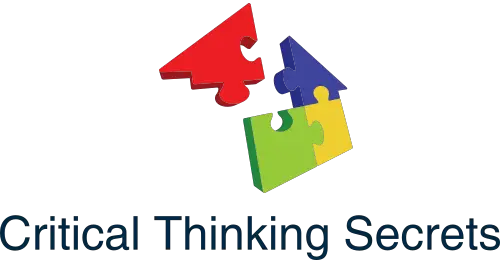Making effective decisions requires a careful evaluation of potential risks. Organizations and individuals use risk assessment to identify and analyze uncertainties. This process ensures that informed choices lead to better outcomes.
This process not only aids in minimizing negative impacts but also enhances strategic planning in various fields, from business to public health.

Understanding the fundamentals of risk assessment and its role in decision-making can significantly improve how choices are made.
By employing structured approaches, decision-makers can systematically weigh options and communicate risks to stakeholders. Engaging effectively with all involved parties is crucial for transparency and gaining valuable insights.
Effective risk assessment is essential for sound decision-making in today’s complex environment. It empowers individuals and organizations to navigate uncertainties with greater confidence and clarity.
Key Takeaways
- Risk assessment is vital for informed decision-making.
- Engaging stakeholders enhances the risk communication process.
- A structured approach to risk management improves outcomes.
Fundamentals of Risk Assessment
Risk assessment is essential for making informed decisions in uncertain environments. It involves evaluating risks, understanding their implications, and supporting choices with crucial information. This section explores the definitions, principles, and processes involved in risk assessment.
Defining Risk Assessment
Risk assessment refers to the systematic process of identifying, analyzing, and evaluating risks. This includes potential threats that could affect objectives. A key aspect is understanding the likelihood of each risk occurring and its possible impact.
This process allows decision-makers to recognize uncertainties associated with various choices. For instance, a company might assess the risk of launching a new product by evaluating market conditions, competitive forces, and consumer behavior. Thus, risk assessment serves as a foundation for informed decision-making.
Principles of Risk Assessment
Several principles guide effective risk assessment. Firstly, it is based on thorough data collection and analysis. Accurate information helps pinpoint potential risks accurately.
Secondly, risk assessment must be transparent and involve stakeholder engagement. Input from all relevant parties ensures that diverse perspectives are considered.
Lastly, it should be iterative, allowing for updates as new information becomes available. This adaptability is crucial in rapidly changing environments where uncertainties can shift quickly.
Risk Assessment Processes
The risk assessment process typically involves several key steps.
- Identification: Recognizing potential risks that could impact objectives.
- Analysis: Evaluating the likelihood and impact of identified risks.
- Prioritization: Ranking risks to focus on the most critical ones.
- Mitigation Planning: Developing strategies to manage or mitigate risks.
- Monitoring: Continuously tracking risks and the effectiveness of mitigation strategies.
These steps provide a structured approach to navigating uncertainty and making informed choices. Risk assessment is not a one-time event; it requires ongoing attention to adapt to new challenges.
Risk Management in Decision Making
Effective risk management is crucial in the decision-making process. It helps identify potential risks and provides a structured way to mitigate them. This section discusses how to integrate risk management into decision making, the role of decision support systems, and the importance of ethics in making risk-based decisions.
Integrating Risk Management and Decision Making
Integrating risk management with decision making involves recognizing risks early in the process. Institutions should analyze potential risks and their impacts on objectives. This analysis can inform decisions and prioritize actions.
A risk assessment framework can clarify key areas where risks exist. This framework includes identifying risks, evaluating their significance, and developing strategies for mitigation. Such integration leads to more informed choices and can enhance organizational resilience.
Strategic Decision Support Systems
Strategic decision support systems play a vital role in risk management. These systems leverage data analytics to provide insights into potential risks and outcomes. By simulating different scenarios, decision-makers can visualize the impact of various choices.
Risk-based decision-making frameworks help prioritize initiatives based on their risk profiles. These systems streamline information flow, enabling quicker and more effective responses to challenges. They also foster collaboration among stakeholders, ensuring diverse perspectives in the decision-making process.
Ethics and Integrity in Risk-Based Decisions
Ethics and integrity are essential in risk-based decisions. Decision-makers must consider the ethical implications of their choices while managing risks. This includes transparency, accountability, and fairness in the decision-making process.
Upholding integrity builds trust within organizations and with stakeholders. Ethical risk management practices include honest reporting and adherence to regulations. Establishing a culture of integrity reinforces commitment to responsible decision-making, ultimately supporting long-term success.
Approaches to Assessing Risk
Risk assessment can be approached in various ways depending on the context and purpose of the analysis. Different methods provide valuable insights and help inform decision-making processes. Three primary approaches are discussed here: quantitative versus qualitative analysis, probabilistic approaches, and the weight of evidence.
Quantitative Versus Qualitative Analysis
Quantitative analysis uses numerical data to evaluate risks. It often involves statistical methods, such as calculating probabilities and expected outcomes. This approach can provide a clearer view of potential impacts, often represented in models or graphs.
Common tools include decision trees and probabilistic risk models, which can depict complex scenarios mathematically.
In contrast, qualitative analysis relies on subjective judgment and descriptive data. It often involves interviews, surveys, and expert opinions. This method can capture insights on risks that numbers alone may overlook.
Both methods have their strengths. Quantitative analysis offers precision, while qualitative analysis provides context and depth, making them complementary in decision-making.
Probabilistic Approaches in Risk Assessment
Probabilistic approaches focus on the likelihood of specific outcomes occurring. This analysis helps quantify uncertainty in risk assessments. It uses statistical models to estimate potential scenarios and their impacts.
A common technique is Monte Carlo simulation, where random sampling runs multiple scenarios to predict outcomes. This method can illustrate a range of possible results, helping decision-makers understand potential risks better.
These approaches can help determine the acceptable risk levels for various situations. By understanding probabilities, organizations can prioritize resources toward the highest priority risks, improving overall risk management.
Weight of Evidence in Decision Making
The weight of evidence relates to how different pieces of information influence decision-making. This approach considers the strength and relevance of available data regarding the risk.
It helps assess how various factors, such as expert opinions, historical data, and current conditions, contribute to the overall understanding of risk.
Decision-makers can use a structured framework by comparing the weight of evidence against specific criteria. This method assists in making informed choices, especially when data is uncertain or incomplete.
Integrating the weight of evidence into risk assessments enhances decision analysis, leading to more robust conclusions in complex scenarios.
Cognitive Aspects of Decision Making
Cognitive factors play a key role in how individuals make decisions, impacting their choices and resulting outcomes. Decision-makers often navigate complexities influenced by biases, preferences, and societal values. Understanding these aspects can enhance the quality of decision-making.
Understanding Cognitive Biases
Cognitive biases can significantly alter decision-making processes. These biases are systematic errors in thinking that affect the judgments and choices of individuals.
For instance, confirmation bias leads decision-makers to favor information that aligns with their existing beliefs. This may cause them to overlook critical data that contradicts their views.
Another example is anchoring bias, where individuals rely too heavily on the first piece of information they encounter. This can skew their judgment in evaluating risks and rewards.
Being aware of these biases enables decision-makers to make more informed choices by recognizing their potential impact.
The Role of Preferences and Societal Values
Preferences and societal values shape the decision-making landscape. Each individual has personal preferences that influence their choices during risk assessments.
For example, someone might prefer immediate rewards over long-term benefits, impacting their decisions in financial investments.
Societal values also play a crucial role. They create a framework within which decisions are made. Decisions that align with cultural norms are often favored, while those that deviate may face resistance.
Additionally, decision-makers encounter trade-offs when balancing personal preferences with societal expectations. Recognizing these influences allows for better understanding and management of decisions in various contexts.
Challenges in Risk Assessment
Risk assessment involves various challenges that can impact the effectiveness of decision-making. Key issues include dealing with uncertainty, managing residual risk, and balancing risk against potential rewards. Understanding these challenges helps in developing better strategies for effective risk management.
Dealing with Uncertainty and Variability
Uncertainty is a major challenge in risk assessment. Decision-makers often face incomplete or unreliable data, leading to difficulties in accurately evaluating risks.
Variability in data sources adds to this uncertainty. Different formats and collection methods can make it hard to trust the information received. As a result, critical decisions may be based on flawed assessments.
To address this, organizations should aim for standardized data collection. Using consistent formats improves data quality and reliability. This approach can help reduce errors and foster more informed decision-making.
Managing Residual Risk
Residual risk refers to the level of risk that remains after all efforts to reduce it. It poses a unique challenge in risk assessment because it can be difficult to evaluate properly.
After implementing controls or mitigation strategies, some risk may still persist. Organizations must decide how much residual risk they are willing to tolerate. Understanding the trade-offs is essential for effective risk-based decision-making.
Prioritizing the assessment of residual risk allows organizations to allocate resources wisely. By focusing on areas with the highest potential impact, they can better manage overall risk levels.
Balancing Risk and Reward
The balance between risk and reward is crucial in decision-making. Organizations must weigh short-term gains against long-term stability, requiring a careful evaluation of both opportunities and potential negatives.
Many decision-makers struggle to find this balance. Taking on too much risk can jeopardize a company’s future, while being overly cautious may lead to missed opportunities.
Establishing clear criteria for risk acceptance helps in this balancing act. Understanding organizational objectives allows for measured risk-taking that aligns with overall goals. By considering both risks and rewards, companies can make informed and strategic decisions.
Risk Assessment Applications
Risk assessment plays a crucial role in various fields, helping professionals make informed decisions. Its applications range from healthcare to mental health and environmental concerns. Each area utilizes specific methods to identify and evaluate risks.
Health Risk Assessment in Clinical Practice
In clinical practice, health risk assessments are essential for identifying potential health issues in patients. Clinicians gather information through questionnaires and medical history evaluations. This data helps determine risk factors for diseases such as diabetes, heart disease, and certain cancers.
By analyzing these risks, healthcare providers can develop tailored prevention plans. For instance, a patient with a family history of heart disease may receive lifestyle recommendations to reduce their risks. Such assessments ensure interventions are timely and appropriate, enhancing patient outcomes.
Mental Health and Risk Assessment
In mental health, risk assessment identifies patients who may be at risk for harm, both to themselves and others. Mental health professionals use structured tools to evaluate suicidal tendencies, self-harm, and violent behaviors.
Assessments include interviews and standardized questionnaires focusing on past behavior, current stressors, and coping mechanisms. Understanding these factors helps clinicians create effective treatment plans. Ensuring patient safety is paramount, and continuous assessment informs treatment adjustments.
Environmental and Societal Risk Considerations
Environmental risk assessments evaluate threats to public health and safety from environmental hazards. This includes pollution, natural disasters, and climate change impacts. Proper assessment techniques help policymakers and organizations devise strategies to mitigate risks.
For example, identifying areas prone to flooding can lead to better urban planning and emergency preparedness. Societal values also play a role, influencing decisions on resource allocation and community resilience. Transparent assessments can build public trust and cooperative efforts in risk management.
Stakeholder Engagement and Risk Communication
Effective stakeholder engagement and clear risk communication are essential for making informed decisions in risk assessment. Involving stakeholders ensures diverse perspectives and helps build trust, while strong communication strategies convey risk information clearly and effectively.
The Importance of Stakeholder Participation
Stakeholder participation is crucial in the risk assessment process. Engaging various stakeholders allows decision-makers to incorporate multiple viewpoints.
These can include affected communities, industry leaders, and regulatory bodies.
By involving stakeholders, organizations can identify potential risks and their impacts more accurately. This collaboration fosters a sense of ownership among stakeholders, increasing support for decisions made.
Effective participation also helps in addressing concerns early on. It reduces misunderstandings and builds trust, leading to smoother implementation of risk management decisions.
Effectiveness of Risk Communication Strategies
Risk communication is about delivering information clearly to stakeholders. It is vital to ensure that the audience understands potential risks and how they may be affected.
Effective strategies may include:
- Use of Simple Language: Avoiding jargon makes information accessible to a broader audience.
- Visual Aids: Charts and graphs can help convey complex data effectively.
- Two-Way Communication: Encouraging feedback allows stakeholders to voice concerns and ask questions.
The clarity of communication affects how stakeholders perceive risks and manage their responses. Clear communication leads to informed decisions, empowering stakeholders to act appropriately in various situations. Engaging effectively with stakeholders can significantly enhance the overall risk governance process.
Advancing Practice Through Research
Research plays a crucial role in enhancing risk assessment practices. By uncovering new insights and improving methodologies, researchers contribute significantly to risk-based decision-making. This section discusses the responsibilities of researchers and highlights the importance of continual improvement in the field.
The Role of Researchers in Risk Assessment
Researchers are vital in the development and application of innovative techniques for risk assessment. They analyze data to identify potential hazards and evaluate the likelihood of adverse outcomes. Their work helps inform public policy and regulatory frameworks.
By studying different environments and populations, they ensure that assessments account for varying levels of susceptibility. This is essential for creating effective health and safety standards. Additionally, researchers gather data on existing practices, identifying gaps that require further investigation.
Through collaboration with governmental and health organizations, they translate scientific findings into practical applications. This partnership enhances transparency and helps make risk assessments more relatable to stakeholders.
Continual Improvement and Future Trends
As the field evolves, the need for continual improvement is essential. Researchers are exploring new methodologies to enhance risk assessment practices. They are also examining the availability and quality of data to strengthen the reliability of assessments.
Emerging technologies, such as artificial intelligence and machine learning, are increasingly being integrated. These advancements allow for more dynamic analysis of risks. They enhance predictive capabilities, enabling more informed decision-making.
Looking forward, researchers aim to streamline data collection processes. By making data more accessible, the speed and accuracy of risk assessments can improve.
Also, there is a growing focus on interdisciplinary approaches. Combining insights from various fields promotes a more comprehensive understanding of risk. This approach is vital for effective risk-based decision-making in complex scenarios.
Frequently Asked Questions
Risk assessment plays a vital role in decision making by enhancing understanding of potential outcomes. It involves systematic methodologies that inform choices and strategies in various contexts.
What are the key steps involved in creating a risk assessment template for decision making?
Creating a risk assessment template typically involves identifying hazards, assessing risks, and determining control measures. The template should include sections to document the likelihood of risks and their potential impacts.
It’s important to involve stakeholders during the process to ensure comprehensive input.
How can one apply a risk assessment framework to a real-world decision making scenario?
Applying a risk assessment framework requires a structured approach. First, define the context and objectives of the decision. Next, identify the relevant risks and evaluate their significance using qualitative or quantitative methods. Finally, propose management strategies to mitigate identified risks before making a decision.
What are the different types of risk assessments used in decision making processes?
Several types of risk assessments exist, including qualitative, quantitative, and semi-quantitative assessments.
Qualitative assessments rely on subjective judgments, while quantitative assessments use numerical data to evaluate risk levels. Semi-quantitative assessments combine both methods to provide a balanced view of risk.
Why is risk assessment considered crucial in the decision making process?
Risk assessment is crucial because it helps identify and evaluate potential pitfalls associated with decisions. It provides decision-makers with valuable insights, enabling them to weigh options and make informed choices.
By understanding risks, organizations can better allocate resources and plan effectively.
How does risk management intersect with decision making in organizational contexts?
In organizational contexts, risk management supports decision making by identifying challenges and opportunities. It creates a framework for evaluating risk exposure and developing strategies to address those risks.
This ensures that decisions align with the organization’s goals and risk tolerance.
Can you provide an overview of the principles underlying risk-based decision making?
Risk-based decision making is grounded in the principles of identifying risks, analyzing their implications, and prioritizing actions based on risk significance. It emphasizes transparency, stakeholder involvement, and continuous improvement.
These principles ensure that decisions are not just reactive but also proactive in managing uncertainties.





